7 Best Indoor Herb Gardens for Your Kitchen

Written by
Nguyen Minh
Reviewed by
Prof. Martin Thorne, Ph.D.An indoor herb garden give the benefit of fresh herbs all year round, regardless of the space you may have outside.
Vertical hydroponic systems have a compact design that allows you to have more herbs in a small kitchen while speedings up the growth of the herbs.
Smart gardens that are self-watering with lights that remind you to check the water offer upgrades to a automatic herb garden.
Basil is a good indoor herb to grow because it needs 14-16 hours of light indoors.
Hydroponic gardens can conserve 90% more water compared to soil systems.
For example, AeroGarden is a highly rated system that provides a harvest in as little as 3-4 weeks.
Article Navigation
Starting an indoor herb garden means you'll have *flavorful* seasonings at your fingertips all year round. No more running to the store to get fresh herbs when you're cooking. Just see yourself snipping a few basil leaves for your pasta or picking mint for tea whenever you like. Your kitchen becomes your own personal garden oasis.
Perfectly suited for tight spaces like apartments and condos, these compact systems make it easy to enjoy restaurant-quality ingredients without ever leaving home. I keep mine by the window so I can reach for it quickly while cooking. It makes planning meals much quicker, and the everyday meals taste extra special.
Space-Saving Solutions
Countertop herb gardens squeeze into cramped places. Look for models under 12" (30 cm) deep like the Click & Grow system. It will slide beside coffee makers without choking up your workspace. You can even place it on narrow window sills. Perfect for galley kitchens.
Vertical garden systems occupy less space horizontally. Tower gardens will actually grow 12 plants in 2 square feet! Place in corners close to sinks. The wall-mounted type will hold up to 15 lbs (6.8 kg). Be sure to check that any stud anchors in the wall are used properly, etc. These should not be hung above stoves.
Keep units away from direct heat. Leave 6 inches between gardens and cooking surfaces. Waterproof bases will prevent sink splash damage. I use silicone mats under my herb garden. They protect the counter from moisture stains and spills.
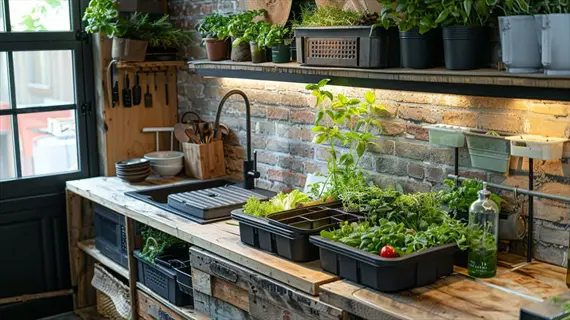
Wall-Mounted Planters
- Fact: Vertical systems utilize unused wall space above counters or near windows where natural sunlight is strongest throughout daytime hours.
- Ideal for small apartments with narrow galley kitchens measuring less than 8 feet (2.4 meters) wide between opposing counter surfaces.
- Choose non-porous materials like stainless steel or sealed ceramic to prevent moisture damage to painted drywall surfaces over time.
- Maximum recommended weight is 12 pounds (5.4 kg) per square foot for standard drywall installations requiring proper anchor support.
- Best for compact herb varieties like creeping thyme, Greek oregano, and miniature basil types with shallow root systems.
- Maintenance requires regular checking for potential water runoff that could stain walls or cabinetry surfaces below planting containers.
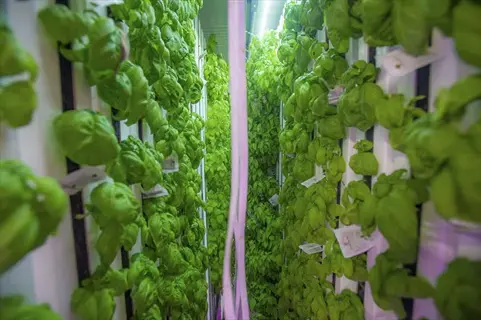
Stackable Tiered Units
- Fact: Modular designs efficiently grow triple the herbs in identical footprint areas compared to traditional single-level planting systems.
- Each tier typically measures 8-10 inches (20-25 cm) in height with 6-8 inch (15-20 cm) diameter planting areas for herbs.
- Built-in water reservoirs allow bottom-tier hydration to trickle upward through connecting fabric wicks to upper levels.
- Lightweight plastic construction keeps fully assembled systems under 5 pounds (2.3 kg) for effortless relocation when needed.
- Rotate tiers weekly to ensure uniform light distribution reaches all herb varieties evenly without shading issues.
- Suited for moisture-loving herbs like peppermint, spearmint, and curly parsley that thrive in consistently humid microclimates.
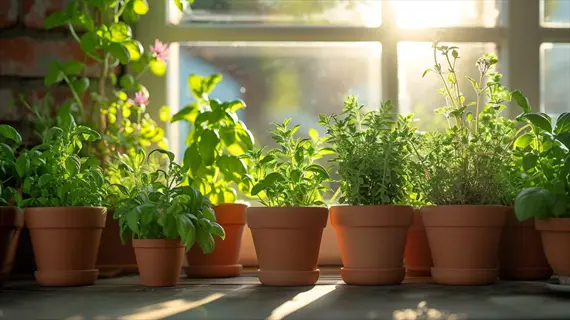
Windowsill Trays
- Fact: Integrated LED strips supplement natural sunlight by 40% during shorter winter days with reduced daylight hours.
- Standard dimensions fit most kitchen windows measuring 24-36 inches (60-90 cm) wide by 6 inches (15 cm) deep typically.
- Waterproof trays featuring drainage holes prevent potential damage to wooden window frames from accumulated moisture over time.
- Low-profile designs under 8 inches (20 cm) tall avoid interfering with standard window operation mechanisms.
- Position south-facing for Mediterranean herbs like rosemary, sage, and lavender needing maximum daily sunlight exposure.
- Include rubberized non-slip feet to prevent accidental sliding during routine window opening or cleaning activities.

Rotating Corner Stands
- Fact: 360-degree rotation provides balanced light exposure without manual plant movement requirements throughout the day.
- Triangular bases fit precisely into corners occupying as little as 12x12 inches (30x30 cm) of valuable floor space.
- Sturdy casters enable smooth rotation even when fully loaded with water, soil, and mature herb plants.
- Tiered designs typically hold 6-8 herb pots at varying heights creating attractive visual planting arrangements.
- Integrated drip trays collect excess water to protect hardwood or tile flooring from potential liquid damage.
- Optimal for quick-growing herbs like cilantro and chives harvested frequently for continuous culinary use.
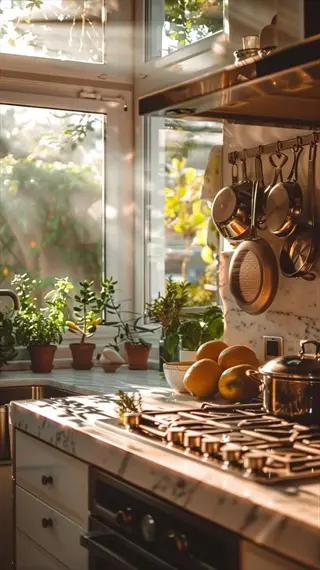
Vertical Garden Towers
- Fact: Hydroponic towers efficiently grow up to 20 plants in just 2 square feet (0.18 m²) of floor space through vertical stacking.
- Submersible pump systems circulate nutrient-rich water from bottom reservoirs to upper planting pods consistently.
- Height-adjustable full-spectrum grow lights accommodate plants from seedling to full maturity stages flexibly.
- Transparent reservoir walls allow easy visual monitoring of water levels without disassembling unit components.
- Modular planting pods enable custom herb combinations based on individual growth speeds and light requirements.
- Requires monthly pump maintenance cleaning to prevent potential clogging from accumulated mineral deposits.

Under-Cabinet Gardens
- Fact: Hidden installations utilize typically wasted space between kitchen countertops and overhead cabinet bottoms.
- Low-profile units under 6 inches (15 cm) tall avoid head collision risks during food preparation activities.
- Waterproof LED strips provide 14 hours of daily artificial light without visible wiring clutter or cords.
- Dishwasher-safe plastic trays simplify thorough cleaning between harvest cycles or seasonal soil changes.
- Mounted with industrial-strength brackets capable of supporting 15 pounds (6.8 kg) of soil and plants securely.
- Best for shade-tolerant herbs like Italian parsley and apple mint needing less intense direct sunlight exposure.

Magnetic Fridge Planters
- Fact: Strong neodymium magnets hold planting containers securely on stainless steel refrigerator surfaces reliably.
- Self-watering felt wicks draw moisture from internal reservoirs lasting 7-10 days between refilling intervals.
- Compact 4-inch (10 cm) diameter pots ideal for small-space herbs like lemon thyme and golden oregano varieties.
- Non-scratch silicone bases protect appliance finishes from potential scratches or moisture damage over time.
- Position on side refrigerator panels rather than doors to avoid constant movement stress during opening.
- Avoid placing near freezer vents where cold drafts below 50°F (10°C) could potentially stunt herb growth rates.

Hanging Basket Systems
- Fact: Suspended designs free valuable counter space while simultaneously improving essential air circulation.
- Adjustable chains allow height customization ranging from 12 to 36 inches (30-90 cm) above work surfaces.
- Lightweight coconut coir liners retain moisture more effectively than traditional plastic planting pots.
- Install ceiling hooks rated for 25+ pounds (11+ kg) directly into wooden studs for maximum safety assurance.
- Group moisture-loving herbs like Genovese basil and pineapple mint to simplify collective watering routines.
- Rotate baskets weekly to prevent uneven lopsided growth toward strongest available light sources naturally.

Foldable Rolling Carts
- Fact: Collapsible designs reduce to just 4-inch (10 cm) depth when not actively used for seasonal herb growing.
- Locking casters enable flexible movement between sunny spots while preventing accidental drift during use.
- Telescoping shelves adjust from 18 to 36 inches (45-90 cm) tall accommodating different plant growth stages.
- Waterproof laminate surfaces withstand frequent spills during regular watering or harvesting activities.
- Side storage pockets conveniently hold pruning tools and liquid plant food within immediate easy reach.
- Ideal solution for renters needing temporary setups without permanent installation requirements or modifications.
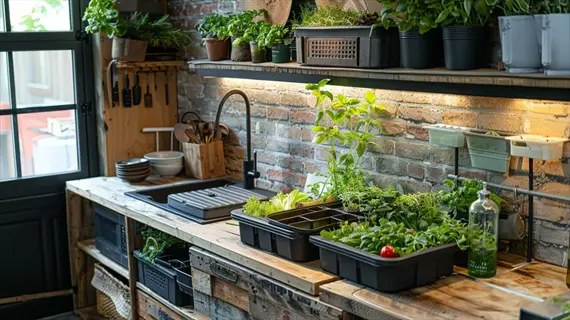
Slide-Out Drawer Gardens
- Fact: Integrated systems convert unused cabinet spaces into hidden yet accessible indoor herb stations.
- Waterproof liners protect wood interiors using sealed silicone edges along all critical interior seams.
- Full-spectrum LED strips mounted under upper cabinets provide essential growth lighting efficiently.
- Ventilation slots prevent humidity buildup that could potentially warp cabinet materials over time.
- Shallow 6-inch (15 cm) depth accommodates herbs while allowing proper drawer closure clearance requirements.
- Install plastic drip trays to capture excess water before potential cabinet damage might otherwise occur.
Comparing Hydroponic vs Soil Systems
Hydroponic systems utilize recirculating technology that uses from 0.5 gallons of water per week, to very little more. The soil system must use 5 or more gallons of water in the same spaces. This is particularly important in areas with water shortages or in dry climates.
Basil hydroponically produces twice as fast. You will harvest in 4 weeks instead of the 8 weeks in soil. The roots will obtain their nutrients instantly in the water solution. With the growth of the soil, you will need to check for the presence of minerals. Hydroponics significantly accelerates the development of herbs.
Vertical hydroponic units utilize only 2 square feet (0.18m²) for multiple plants instead of 1 square foot minimum per plant for soil. Space efficiency converts even small kitchens into functional gardens. Hydroponics simplifies nutrient management by measuring liquids.
Soil requires weekly watering and monthly fertilizing. Hydroponics requires pH checking and tank cleaning. I prefer hydroponics for faster results, but I also have pots of soil for herbs that contain wood, such as rosemary. Each of these types of systems can be used for different gardening styles.
Choose Hydroponics For
- Rapid harvests: When needing herbs within 3-4 weeks for cooking
- Water conservation: In drought-prone areas or eco-conscious homes
- Limited space: Apartments with under 10 sq ft (0.9m²) of free area
- Tech integration: When wanting app-controlled lighting/nutrient dosing
- Pest avoidance: For growers wanting completely soil-free environments
Choose Soil-Based For
- Beginner gardeners: More forgiving with watering and nutrient mistakes
- Organic purists: When using compost teas and natural amendments
- Lower budgets: Initial setups under $50 with basic pots
- Seasonal transitions: Easier to move plants outdoors in summer
- Larger herbs: Rosemary and sage needing deep root space
Fast-Growing Herbs
- Hydroponic preference: Basil, cilantro, and mint thrive with rapid nutrient uptake
- Soil alternative: These herbs still grow well but at a slower natural pace
- Harvest times reduced significantly in hydroponic environments
- Continuous harvesting possible with proper nutrient management
- Ideal for cooks needing frequent fresh herb supplies
Woody Herbs
- Soil preference: Rosemary, thyme and sage develop better flavor profiles
- Hydroponic alternative: Possible but requires careful pH balancing
- Slower growth mirrors natural Mediterranean environments
- Deeper root systems benefit from soil's physical structure
- Less frequent watering needs suit soil-based cultivation
Limited Space Gardening
- Hydroponic advantage: Vertical towers maximize vertical space efficiently
- Soil solution: Compact pots on windowsills or hanging planters
- Small apartments benefit most from space-saving hydroponics
- Minimum 12x12 inch (30x30 cm) footprint for productive systems
- Rotating stands help optimize light in confined areas
Water-Restricted Environments
- Hydroponic efficiency: Recirculating systems conserve water significantly
- Soil adaptation: Self-watering pots with reservoirs reduce frequency
- Drought-prone areas benefit from closed water systems
- Evaporation rates lower in indoor hydroponic setups
- Monitoring prevents water waste in both systems
Beginner-Friendly Options
- Soil advantage: More forgiving for watering and nutrient mistakes
- Hydroponic entry: Simple pod systems like AeroGarden Harvest
- Lower maintenance requirements for first-time gardeners
- Established plants easier to transition outdoors seasonally
- Budget-friendly soil setups under $50 ideal for starters
Setting Up Your Herb Garden
No special tools are required to unbox your herb garden system. Most units can be assembled easily by hand in just a few minutes. Remove and organize parts carefully. Wipe the reservoir with a damp cloth to remove manufacturing residues. Check for seed pods and nutrients that may be included.
Prepare water correctly for healthy growth. Use filtered water when possible. For tap water, let it stand for 24 hours to allow the chlorine to evaporate. Use dechlorination drops if plant stress is noticed. Fill the container to the MAX line indicator.
Distribute lights according to the requirements of each herb. Basil can be placed 6-8 inches (15-20 cm) away from the LEDs. Place mint further away, as it is a shade-loving herb. Adjust the heights weekly to accommodate the herb's growth. Use a timer to give them 14-16 hours of light daily.
Observe germination daily. Observe whether a root emerges in the clear pod. Ensure there is condensation under the dome. Record the change in height of the seedlings. I write down the color changes in a journal. The dome should be removed as soon as the roots emerge.
Unboxing and Preparation
- Remove all components: base unit, light arm, pods, and power adapter
- Wipe reservoir with damp cloth to remove manufacturing residues
- Check for included accessories: grow domes, plant food, measuring cap
- Clear 12x12 inch (30x30 cm) counter space near power outlet
- Assemble telescoping light arm by extending to minimum height position
Water and Nutrient Setup
- Fill reservoir with cool filtered water to MAX line indicator
- Add liquid plant food using included measuring cap (typically 8ml per liter)
- For tap water, let sit 24 hours to evaporate chlorine or use dechlorination drops
- Insert water level indicator float ensuring it moves freely
- Maintain water temperature between 65-70 °F (18-21 °C) for optimal absorption
Pod Placement and Germination
- Insert seed pods into designated slots until they click into place
- Cover each pod with clear plastic dome to maintain 70% humidity
- Position LED lights 2-4 inches (5-10 cm) above domes initially
- Set timer for 16 hours daily light cycle using control panel
- Label pods with included markers if growing multiple herb varieties
Initial Environment Adjustment
- Place garden away from heat sources like ovens or heating vents
- Ensure room temperature stays between 65-75 °F (18-24 °C)
- Use hygrometer to monitor humidity - ideal 40-60% range
- Position near window only if using supplemental grow lights
- Avoid direct cold drafts from air conditioners or open windows
First-Day Activation
- Plug unit into grounded electrical outlet with stable power supply
- Verify light arm extends fully without obstruction above pods
- Confirm water circulation in hydroponic systems (gentle bubbling sound)
- Record start date in gardening journal for growth tracking
- Set phone reminders for next water check in 2-3 days
Best Herbs and Care Essentials
Basil is perfect for beginners because it grows fast and is forgiving. Provide 14-16 hours of bright light each day, ideally near a south-facing window. Water when the top half-inch of soil feels dry. Pinch leaves off above the nodes for continued harvests.
Mediterranean herbs such as rosemary require strong direct sunlight all day. Shade-tolerant mint can thrive with as little as four to six hours of daylight per day. Put your light-hungry thyme closest to the grow lights. Move the parsley further back, where it can get softer light.
Harvest properly to encourage regrowth. For basil, snip the stems above leaf pairs. For mint, leave one inch of stem above the soil. Do not remove more than 30% of foliage at a single time. Always use a clean, sharp pair of scissors, as clean cuts will heal faster.
Consider pet safety when choosing herbs. Mint varieties can harm cats causing digestive issues. Basil and thyme remain pet-safe alternatives. Keep toxic herbs elevated or in separate rooms.
Basil (Ocimum basilicum)
- Growth speed: Ready for first harvest in 3-4 weeks; fastest-growing kitchen herb
- Light requirements: 14-16 hours daily of bright light; position 6-8 inches (15-20 cm) from LEDs
- Water needs: Keep soil consistently moist; water when top 0.5 inch (1.3 cm) feels dry
- Harvesting technique: Pinch leaves above leaf nodes; never remove more than 30% of plant
- Special care: Rotate plant weekly for even growth; prune flower buds immediately
- Pet safety: Non-toxic to cats and dogs
Rosemary (Salvia rosmarinus)
- Growth speed: Slow grower; first harvest in 8-10 weeks; prefers drier conditions
- Light requirements: Minimum 6 hours direct light; south-facing window ideal
- Water needs: Allow soil to dry completely between waterings; susceptible to root rot
- Harvesting technique: Snip sprigs from woody stems using sharp scissors
- Special care: Requires excellent drainage; add perlite to soil mix
- Pet safety: Safe for pets in small quantities
Mint (Mentha spp.)
- Growth speed: Vigorous spreader; harvest in 4-6 weeks; contains natural pesticides
- Light requirements: Tolerates partial shade; 4-6 hours light sufficient
- Water needs: High moisture requirement; keep soil damp but not waterlogged
- Harvesting technique: Cut stems 1 inch (2.5 cm) above soil; promotes bushiness
- Special care: Grow in separate containers to prevent invasive spreading
- Pet safety: Toxic to cats in large quantities; causes digestive upset
Parsley (Petroselinum crispum)
- Growth speed: Moderate growth; harvest in 10-12 weeks from seeding
- Light requirements: 4-6 hours direct light; thrives under standard grow lights
- Water needs: Consistent moisture; water when soil surface feels dry
- Harvesting technique: Cut outer stems first; preserves central growth point
- Special care: Benefits from monthly liquid seaweed fertilizer
- Pet safety: Completely non-toxic for pets
Thyme (Thymus vulgaris)
- Growth speed: Slow to establish; first harvest in 10-12 weeks
- Light requirements: High light needs; minimum 8 hours direct sunlight
- Water needs: Drought-tolerant; water only when soil is completely dry
- Harvesting technique: Trim stem tips before flowering for best flavor
- Special care: Requires sandy soil mix with 30% perlite for drainage
- Pet safety: Generally safe but may cause mild stomach upset
Top Indoor Herb Gardens Reviewed
The distinct feature of the AeroGarden Harvest Elite is its vacation mode system. This product stops plant growth while away. An easy-to-read digital display automatically keeps track of the plant food schedule. The unit requires only 10.5 x 6.125 inches (27 x 15.5 cm) of counter space in tight kitchens.
Water management varies greatly between models. Click & Grow utilizes a self-watering wick system requiring no pumps. iDoo requires weekly nutrient checks. EDN uses app-controlled watering. All offer germination guarantees ranging from a minimum of 1 to 3 months of growth.
The dimensions needed fall into the categories of compact to freestanding. Rise Gardens units require24 x 18 inches (61 x 46 cm) of floor space. Mount wall units on something sturdy. Measure before selecting the area. Taller systems are best set up against walls near corners and away from usual traffic.
Warranty periods protect your investment. Most systems offer 1-2 years coverage. AeroGarden includes a 1-year guarantee. Click & Grow extends to 2 years. Check replacement policies for lights and pumps before purchase.
AeroGarden Harvest Elite
- Key feature: Digital display with vacation mode and plant food reminders
- Pod capacity: 6 pre-seeded pods with guaranteed germination
- Dimensions: 10.5 x 6.125 x 11 inches (27 x 15.5 x 28 cm) compact footprint
- Light system: Adjustable 20W LED with customizable growth cycles
- Maintenance: Monthly reservoir cleaning required
- Best for: Tech-savvy users wanting automated herb care
Click & Grow Smart Garden 3
- Key feature: Self-watering wick system with no pumps or tubing
- Pod capacity: 3 pre-seeded pods with soil nutrients included
- Dimensions: 12 x 4.75 x 9 inches (30 x 12 x 23 cm) ultra-slim profile
- Light system: Fixed 10W LED with automatic 18-hour daily cycle
- Maintenance: Refill water when indicator bobber drops
- Best for: Small kitchens needing minimal-space solutions
iDoo Hydroponic System
- Key feature: Seed-free pods for custom herb selection
- Pod capacity: 12 pods with telescoping light adjustments
- Dimensions: 6.3 x 11.8 x 15.4 inches (16 x 30 x 39 cm) vertical design
- Light system: Full-spectrum LED with height-adjustable arms
- Maintenance: Weekly nutrient monitoring required
- Best for: Experienced gardeners wanting planting flexibility
EDN SmallGarden
- Key feature: Walnut wood base with iOS app controls
- Pod capacity: 10 pre-seeded pods with quick germination
- Dimensions: 18 x 6 x 11 inches (46 x 15 x 28 cm) premium build
- Light system: Fixed LED with app-adjustable intensity/timing
- Maintenance: WiFi connectivity requires regular app updates
- Best for: Design-focused users wanting smart home integration
Rise Gardens Personal Garden
- Key feature: Modular design with separate nursery compartment
- Pod capacity: 8 pods with companion app growth tracking
- Dimensions: 24 x 18 x 36 inches (61 x 46 x 91 cm) freestanding unit
- Light system: Customizable spectrum LEDs with dawn/dusk simulation
- Maintenance: Bi-weekly nutrient adjustments recommended
- Best for: Serious growers wanting commercial-scale yields
5 Common Myths
Indoor herb gardens don't get enough direct sunlight through windows for successful growth
Modern LED grow lights provide effective lighting conditions without needing natural sunlight. These specialized systems deliver constant light which is suited to plant requirements regardless of window position or weather. Adjustable timers will maintain the best daily light cycles to ensure that constant growth is obtained throughout the year in all the possible places indoors, from dark corners to basements.
Hydroponically grown herbs lack the rich flavor found in traditional soil-grown varieties
Precisely balanced nutrient solutions actually enhance flavor development in controlled environments. Custom mineral formulations target specific herb characteristics like basil's aromatic oils. Many experienced gardeners note hydroponic herbs often develop more concentrated flavors due to optimized growing conditions without soil variability affecting taste profiles.
Intelligent indoor gardening systems are too expensive for average household use
The systems are economical as a result of the continuous production of fresh herbs. The initial expense is justified by the fact that stores need not be frequent outlets, and waste from old herbs is reduced. Most consume very little electricity, the amount comparable to that of an ordinary light bulb, and are in this way an economical approach to herb production.
Gardening without soil requires technical skill and ongoing attention
Automatic modern systems greatly simplify maintenance and operation through helpful features and notifications. The pre-measured nutrient pods and self-regulating components minimize manual interference. Most systems require only minimal attention like refilling the water supply every once and awhile. This makes the systems perfectly accessible to less experienced gardeners.
Indoor gardening leads to pest issues throughout the home
Soil-less hydroponic systems naturally deter such gardening pests because there is no habitat for them. The trick is to manage the maintenance of them, such as changing the water regularly. This will prevent problems from developing. If there are any problems, there are some very simple and non-toxic remedies available to keep the conditions treatable without the use of toxic and harmful chemicals. This keeps the indoor environment clean and more livable.
Conclusion
An indoor herb garden offers constant access to fresh flavors every season. Snowstorms or heatwaves won't hinder your harvest. This ability to constantly access fresh flavors produces cooking changes. You will always have your bright basil for pasta purposes or mint for summer drinks.
Modern systems work with all kitchen layouts. By using ingenious space solutions, wasted corners can be used in vertical towers. At the same time, the slim boxes fit easily under benchtops. Even tiny apartments can accommodate these usable gardens. Thus, you have fresh edible ingredients without sacrificing invaluable bench space.
User-friendly functions make it easy to get started, even for those initially unfamiliar with the system. Automated reminders suggest when to water the plants. Color coding indicates which plants need nutrients. Many systems work without modification or the need to buy accessories right out of the box. You will also become proficient in maintenance far faster than with traditional gardening.
Fresh-picked herbs change ordinary meals into a restaurant experience. Snip rosemary over baked potatoes. Add newly cut chives to scrambled eggs. This daily cooking upgrade will become your new normal. Your kitchen will now be a source of constant flavor magic.
External Sources
Frequently Asked Questions
Can I create an indoor herb garden without outdoor space?
Yes, indoor herb gardens are designed specifically for limited spaces. Compact systems like vertical hydroponic towers or under-cabinet units utilize minimal square footage while providing optimal growing conditions through controlled lighting and watering systems.
How do I provide sufficient light for indoor herbs?
Use full-spectrum LED grow lights positioned 6-8 inches above plants. Modern indoor gardens include automated lighting systems that provide:
- 14-16 daily light hours for Mediterranean herbs
- Adjustable intensity settings
- Timer-controlled photoperiods
- Energy-efficient operation
Are hydroponic herb gardens effective for beginners?
Yes, modern hydroponic systems simplify indoor gardening with automated features. Beginner-friendly options like Click & Grow require only water refills and provide pre-seeded pods with guaranteed germination, eliminating complex setup processes.
Which herbs grow best in indoor garden systems?
Top-performing indoor herbs include:
- Basil - thrives with 14-16 light hours
- Mint - tolerates lower light conditions
- Parsley - grows well in compact spaces
- Chives - adaptable to various systems
- Thyme - requires less frequent watering
How often do indoor herbs need maintenance?
Maintenance varies by system but typically involves weekly water checks and monthly nutrient monitoring. Smart gardens simplify this with visual indicators and app notifications, requiring only 5-10 minutes of care weekly.
Can I grow herbs hydroponically without soil?
Yes, hydroponic systems use nutrient-rich water solutions instead of soil. These systems deliver minerals directly to roots through methods like:
- Wick-based absorption
- Water circulation pumps
- Aeroponic misting
- Deep water culture
What are common mistakes in indoor herb gardening?
Avoid these frequent errors:
- Overwatering soil-based herbs
- Insufficient light duration
- Neglecting pH balance in hydroponics
- Crowding plants beyond capacity
- Harvesting more than 30% at once
Are indoor herb gardens cost-effective long-term?
Yes, after the initial investment, indoor gardens reduce grocery expenses significantly. Systems like AeroGarden produce $15-$20 worth of herbs monthly, typically paying for themselves within 4-6 months of regular harvesting.
Can herbs grow in rooms without windows?
Absolutely. Modern LED grow lights provide complete spectrum illumination without natural sunlight. Systems like iDoo Hydroponic Garden are designed specifically for interior rooms, basements, or apartments with limited natural light access.
How soon can I harvest from indoor gardens?
Harvest times vary by herb and system:
- Fast growers like basil: 3-4 weeks
- Medium growers like parsley: 6-8 weeks
- Slow growers like rosemary: 10-12 weeks
- Accelerated growth in hydroponic systems

